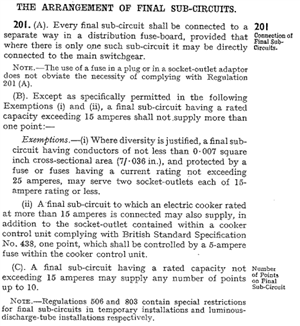ISTR that in an old edition of the then IEE regs, that two socket outlets each of the unfused 15 amp type could be connected to a 25 amp fuse.
Have found a number wired thus in a large old house. Possibly pre-war, wired in MICC and still in good condition.


